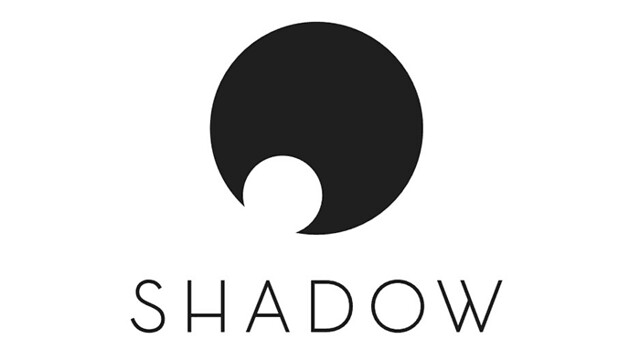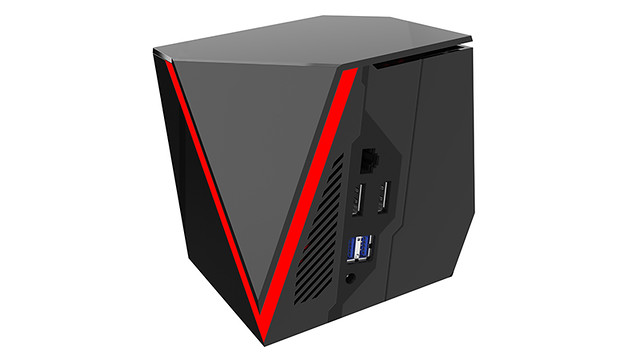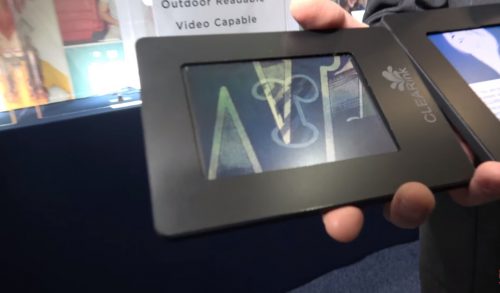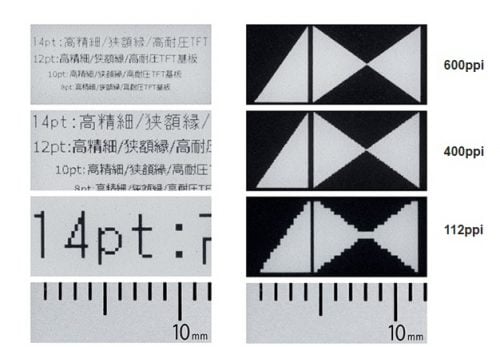 Dictate, a new project from Microsoft’s experimental R&D group, Microsoft Garage, is launching today to offer a way to type using your voice in Office programs including Outlook, Word and PowerPoint. Available as an add-in for Microsoft’s software, Dictate is powered by the same speech recognition technology that Cortana uses in order to convert your speech to text. This is… Read More
Dictate, a new project from Microsoft’s experimental R&D group, Microsoft Garage, is launching today to offer a way to type using your voice in Office programs including Outlook, Word and PowerPoint. Available as an add-in for Microsoft’s software, Dictate is powered by the same speech recognition technology that Cortana uses in order to convert your speech to text. This is… Read MoreJean-Philippe Encausse
Shared posts
Microsoft’s Dictate uses Cortana’s speech recognition to enable dictation in Office
 Dictate, a new project from Microsoft’s experimental R&D group, Microsoft Garage, is launching today to offer a way to type using your voice in Office programs including Outlook, Word and PowerPoint. Available as an add-in for Microsoft’s software, Dictate is powered by the same speech recognition technology that Cortana uses in order to convert your speech to text. This is… Read More
Dictate, a new project from Microsoft’s experimental R&D group, Microsoft Garage, is launching today to offer a way to type using your voice in Office programs including Outlook, Word and PowerPoint. Available as an add-in for Microsoft’s software, Dictate is powered by the same speech recognition technology that Cortana uses in order to convert your speech to text. This is… Read MoreHasbro’s new Gaming Crate subscription service is for board game fanatics

Toy and board game company Hasbro is entering the subscription box market with Hasbro Gaming Crate. The box is offered in two options: a family-friendly version and one geared more toward party games for adults. It includes three games, delivered every three months for the cost of $49.99.
Focusing on brand-new games instead of classics, the games are curated by Hasbro experts and include some crate-exclusive titles. (Hasbro’s website notes that these exclusives “may” become available for public purchase in the future, meaning the company could be using the crate to gain valuable insights on which games to invest in.)
The first Family Crate will be themed “family staycation” and features crate exclusive Mask of the Pharaoh, which was...
Microsoft’s new Xbox Live Avatars are impressively diverse and customizable
Microsoft is preparing to launch a big overhaul of its Xbox Live Avatars system. Originally released as an Xbox 360 feature in 2008, Xbox Live Avatars have been slowly tweaked to include more props and customizability ever since. Microsoft is now introducing a new avatar system that’s designed to make these Xbox avatars a lot more customizable, with a huge focus on diversity.
The new avatars will let you fully customize your online character with new body type options, clothing, and props. During the Xbox daily briefing at E3 yesterday, Microsoft demonstrated the new avatar system with a trailer (above) and some behind-the-scenes footage of how the company is building the new Xbox Live Avatars. Microsoft’s trailer shows an amputee,...
Blade lève 51 millions d’euros : Vers l’avènement du zéro PC ?
Shadow, je vous en ai parlé en détail lors d’un précédent billet, c’est techniquement une solution assez classique, proche d’un service à la Netflix : On utilise une machine comme interface pour y relier écran, clavier et souris mais le calcul pour afficher les données que vous allez utiliser est effectué à distance, loin de vote machine, dans une salle remplie de serveurs.
Shadow, c’est donc une minimachine proposée par Blade mais également un accès vers une autre, beaucoup plus grosse solution. Vous prenez un abonnement mensuel pour accéder à votre serveur et profiter de ses capacités.
Des jeux PC en Ultra sur mon vieux MacBookPro 2009, merci @Shadow_France , j’ai la larme à l’oeil pic.twitter.com/Kc5ORPC9cQ
— Jérôme Keinborg (@jeromekeinborg) 6 mai 2017
Overwatch sur un MacBook Pro
Vous pouvez également vous passer de minimachine et utiliser une application Mac, Android ou Windows. en fait peut importe le flacon, l’ivresse est brassée bien loin de chez vous et c’est tout l’intérêt du dispositif. Votre machine habituelle est un zombie, son cerveau est situé à distance. Tout comme vous streamez des jeux via un service comme Youtube ou Netflix sans jamais avoir la totalité de la vidéo sur votre machine, vous utilisez un PC à distance pour jouer ou travailler sans jamais avoir les programmes installés sur votre propre matériel.
Les serveurs de Blade : 2 Xeons, beaucoup de mémoire et 8 cartes GeForce 1070.
Avec ce système, Blade peut assurer des performances en jeu comparables à un PC de joueur classique, en fait vous profitez d’un vrai système, d’un vrai stockage et des performances d’un morceau de processeur Intel Xeon et d’une carte graphique GeForce 1070 dédiée situés dans une salle de serveur. Les avantages de la solution sont nombreux. Pour vous, vous n’avez qu’un forfait mensuel à débourser pour obtenir les performances d’un PC de jeu plutôt haut de gamme. A 30€ par mois pour un engagement d’une année, vous ne payez que 360€ par an pour un PC capable de faire tourner tous les jeux Triple A du marché. Vous n’avez pas à gérer ou à faire évoluer votre machine. Le service s’en chargera quand le besoin s’en fera sentir avec l’apparition de nouveaux jeux ou de nouveaux circuits graphiques. Votre PC peut ainsi évoluer et vous pouvez prendre un abonnement moins long pour une période donnée : Vacances ou autres par exemple.
Le boitier Shadow
Mais la technologie de Blade n’est rentable qu’avec un gros parc de clients en mutualisant les ressources. Sur un même serveur, il y a 8 cartes graphiques GeForce 1070 en parallèle et deux Intel Xeon E5-2600 v3. Mais ces serveurs peuvent accueillir bien plus de 8 clients… à condition qu’ils ne se connectent pas en même temps. Avec Shadow, l’intérêt est de dimensionner ses serveurs du mieux possible pour que le plus de clients possible puissent en profiter en achetant le minimum de matériel. Si un joueur est plutôt matinal, il pourra utiliser la même carte graphique qu’un veilleur de nuit et un autre qui ne joue qu’en rentrant de l’école aura recours au services du même matériel. Trois abonnements, un seul moteur, la recette du succès.
Avec cette levée de fonds, Blade veut prospecter à l’international. En ouvrant des bureaux en Angleterre et en Allemagne d’ici la fin de l’année mais également en installant une antenne en Californie cet été. Plus les serveurs implantés pourront couvrir de larges fuseaux horaires, plus la rentabilité sera bonne pour le système.
Reste encore et toujours un dernier bémol, le nerf de la guerre est la connexion aux services de Blade. Une bonne dose de fibre est nécessaire pour profiter du service sans subir de ralentissements incompatibles avec les usages de jeu, principale activité visée par Blade avec son système aujourd’hui même si d’autres usages sont possibles. Un accès très haut débit, en règle générale la fibre, est indispensable pour profiter de ce service correctement. Un détail important car d’autres en ont fait les frais par le passé. Nvidia notamment qui n’a pas réussi à imposer un service du même type avec son GRID annoncé en 2013.
Blade lève 51 millions d’euros : Vers l’avènement du zéro PC ? © MiniMachines.net. 2016
Il réussit à faire passer son portrait 3D sur sa carte d’identité française
Le numérique vient tromper le réel. Le 7 avril 2017, Raphaël F. a effectué une demande de renouvellement de sa carte d’identité à la mairie du 18e (Paris). Jusque là, rien de très étrange. Il a fourni tous les justificatifs papier nécessaires à la procédure, dont une photo d’identité conforme aux règles établies. Sa demande a été acceptée et il dispose aujourd’hui d’une nouvelle carte d’identité.
Photo réalisée en 3D
A y regarder de plus près, la photo qu’il a soumise est en réalité un modèle 3D de son visage. Cette image a été conçue grâce à la technologie de plusieurs logiciels, qui sont notamment utilisés dans l’industrie du cinéma et du jeu vidéo pour créer des effets spéciaux extrêmement réalistes. Son visage a été recréé de toutes pièces en 3D. L’artiste s’est amusé à rajouter des effets de lumière et de cadre pour rendre cette fausse pièce d’identité plus réaliste que jamais. Et cela a marché.
Une critique des nouvelles technologies
Par cette expérience, l’artiste Raphaël F. a souhaité mettre en exergue « l’aspect parfois très inquiétant des nouvelles technologies » tout en s’interrogeant sur la nature poétique de l’identité de chacun. Le portrait, la planche photomaton et le récépissé de demande ont été montrés à la Galerie R-2 dans le cadre de l’Exposition Agora.




Crédits : Facebook/Raphaelf
Ce stylo permet de chercher sur internet des images similaires à vos dessins
Au Brésil, Getty Images a lancé Pen Project. Un stylo qui se connecte à votre smartphone pour rechercher des équivalents de vos dessins sur la banque de données d’images.
Imaginé et développé par le Getty Images Innovation Lab, ce stylo veut « révolutionner le futur de la recherche d’images ». Et il faut dire que l’idée est pas mal même si elle est loin d’être révolutionnaire. Si vous êtes dans la création graphique ou la communication il doit vous arriver de chercher régulièrement des images. Et parfois, on a une idée en tête et on aimerait trouver des images similaires à celle-ci. Alors, si vous avez déjà un exemple d’image, vous pouvez utiliser la fonction « Images similaires » dans Google Images. Mais si vous n’avez rien que votre imagination ?
C’est pour ça que Getty a imaginé ce stylo. Il se connecte à l’application Pen Project de Getty et permet de dessiner sur une feuille de papier tout en dupliquant son dessin sur l’application (d’un même geste). Une fois votre croquis terminé, il vous suffit de chercher les images similaires en appuyant simplement sur un bouton et le tour est joué !
Si d’un point de vue technique et algorithme on peut saluer la prouesse, c’est plus dans l’usage qu’on tique un peu en regardant la vidéo de promotion de l’innovation. Dans les quelques exemples fournis, on voit une graphiste dessiner, par exemple, un croquis de cactus pour chercher des cactus dans Getty Images. Bref, elle aurait plus vite fait de taper Cactus dans le moteur de recherche.
Car si le côté créatif de l’idée est intéressant, on peut se poser la question de l’utilité de créer des croquis au lieu de faire des recherches de mots-clés. Si votre croquis est trop créatif et n’est pas reconnu par le logiciel, il vous suggérera alors des choses qui n’ont rien à voir avec votre idée initiale… et c’est peut-être là que l’application est la plus utile !







Imaginé par Getty Images et AlmapBBDO
Source gettyimagespen.com
Cet article Ce stylo permet de chercher sur internet des images similaires à vos dessins provient du blog Creapills, le média référence des idées créatives et de l'innovation marketing.
CLEARink : Une nouvelle solution d’encre numérique couleur
CLEARink ressemble à un produit entre deux mondes. D’un côté, elle propose un affichage compatible avec des situations très lumineuses en utilisant l’environnement à son avantage comme de l’encre numérique. De l’autre, elle permet de faire tourner une vidéo avec un rafraîchissement correct et jusqu’à 4096 couleurs comme un affichage LCD classique.
Mais CLEARink est aussi en dessous des deux technologies d’un point de vue rendu. Son côté réflectif n’est pas aussi contrasté et lisible que de l’encre numérique et ses couleurs sont délavées et presque invisibles.
Difficile donc de se faire une idée sur le rendu global de cette technologie mais un point est sur, la marque permet de faire quelque chose d’impossible sur les deux technologies qui existent aujourd’hui : Afficher un texte lisible en plein soleil et jouer une vidéo au dessus en même temps. Un détail intéressant qui permettrait de mieux penser certains livres comme les manuels scolaires ou autres documents pédagogiques, quitte à se passer de la couleur, avec un rendu vidéo en support de textes.
Un prototype d’affichage vidéo coloré
La marque ne devrait pas proposer ce type d’affichage avant 2018. Mais elle vient de recevoir un prix pour son travail au salon Display Week 2017 connu également sous le nom de SID International Symposium. Un prix prestigieux qui va mettre CLEARink sur le devant de la scène et, peut être, améliorer sa recherche de partenaires.
Un prototype d’écran PixelQI intégré dans un netbook Lenovo…
On se souvient évidemment d’autres promesses du genre comme Liquavista, Mirasol et particulièrement de la marque PixelQI qui proposait grosso modo la même chose que CLEARink mais qui, mis à part quelques rares machines pas vraiment distribuées à grande échelle, n’a jamais réussi à faire aboutir ses produits en rayon.
Le procédé de CLEARink n’est pas énormément détaillé mais il s’agit de créer un courant au travers d’un courant qui vient bloquer le reflet de la lumière dans l’image. Les samples de cette technologie devraient être rapidement disponibles et l’éclairage du salon Display Week devrait l’aider à avancer. La production de masse pourrait commencer rapidement et les premiers produits pourraient donc arriver en début d’années prochaine.
Source : ARMDevices
CLEARink : Une nouvelle solution d’encre numérique couleur © MiniMachines.net. 2016
Super Mario Fish Tank Cool Enough To ALMOST Make You Want A Fish Tank

Note in the title of this article I said ALMOST. Having and maintaining a fish tank is a great deal of constant work. But seeing an original fish tank like this done so superbly in a Super Mario theme, I cannot but think of how cool that would look in my home.

But (and there is always a but)…
I have had fish tanks and know how much work they are so I will just save this picture to smile now and then and keep my fish tank-less life going just the way it is.

Great job though, Kelsey Kronmiller !
The post Super Mario Fish Tank Cool Enough To ALMOST Make You Want A Fish Tank appeared first on Geeks are Sexy Technology News.
The Pro2 Adds 2D Print Images To Matterport’s Robust 3D Camera
Matterport has positioned itself as one of the most prominent VR companies, growing the company on a foundation of a large library of real places scanned into 3D that are being made available for VR as well. They’re able to do this with their proprietary camera and, now, they’re introducing a new model that not only brings improved 3D and VR scans but also 2D prints for a robust all-in-one solution.
Matterport’s new Pro2 is priced $3,995, which is over $500 cheaper than their original camera but it comes packed with more functionality. This 134-megapixel 3D camera comes with complete solutions for those wanting to use it for Real Estate: GPS-tagging of scan locations, automatic generation of interactive floor plans, and more. The kicker is, this same device can harness those same 134-megapixels to provides 4k 2D images in addition to 3D scans.
“As real estate professionals, we must embrace technology to stay competitive,” said John De Souza, President at Cressy & Everett Real Estate, in a prepared statement about the new camera. “Matterport has helped my team win listings and reach more buyers.”
The Pro2 versatility is a benefit for creators, small teams and large. Large teams can send out staff equipped with a multi-tool that improves fficiency and small teams can spend limited funds on hardware that serves multiple purposes.
To learn more about how Matterport is impacting the Real Estate market via VR, check out this feature from one of your writers.
Tagged with: Matterport
A World First CRISPR Trial Will Edit Genes Inside the Human Body
Uninvasive CRISPR
A new CRISPR trial, which hopes to eliminate the human papillomavirus (HPV), is set to be the first to attempt to use the technique inside the human body. In the non-invasive treatment, scientists will apply a gel that carries the necessary DNA coding for the CRISPR machinery to the cervixes of 60 women between the ages of 18 and 50. The team aims to disable the tumor growth mechanism in HPV cells.
The trial stands in contradistinction to the usual CRISPR method of extracting cells and re-injecting them into the affected area; although it will still use the Cas9 enzyme (which acts as a pair of ‘molecular scissors’) and guiding RNA that is typical of the process.

20 trials are set to begin in the rest of 2017 and early 2018. Most of the research will occur in China, and will focus on disabling cancer’s PD-1 gene that fools the human immune system into not attacking the cells. Different trials are focusing on different types of cancer including breast, bladder, esophageal, kidney, and prostate cancers.
Modifying Our World
The study, if it succeeds, will be promising for sufferers of HPV and act as a milestone in the CRISPR process. Although HPV is not necessarily cancerous, it can cause cervical cancer. In the U.S. alone, there are more than 3 million new infections every year. Although there is a vaccine for the virus, currently, once you have it you can never get rid of it.
More generally, the CRISPR process could be nothing short of a miracle: if it passes all medical tests it wouldn’t just make medicine a whole new kettle of fish, it would reinvent the kettle…and the fish, for almost any field. It is cheaper than other gene editing therapies, and could potentially save millions of lives by curing diseases we can only deal with therapeutically like cancer, diabetes and cystic-fibrosis. Crops could be altered more effectively using the process. Drugs and materials that were never possible before could be pioneered.
However, it is still extremely nascent technology, and many fear that there could also be a host of unexpected consequences. Recently, it has been found that it causes hundreds of unexpected mutations in DNA. While these concerns are valid, more research is necessary. Which is why the upcoming studies over the next few years are so vital to the future of our health.
The post A World First CRISPR Trial Will Edit Genes Inside the Human Body appeared first on Futurism.
Bebop Sensors creates motion-sensing gloves for VR that tickle your fingertips
Bebop Sensors created the Marcel Modular Data Gloves for virtual (and augmented) reality capable of accurately tracking hands and fingers. They are designed to be modular so that headset makers can create unique experiences.
The post Bebop Sensors creates motion-sensing gloves for VR that tickle your fingertips appeared first on Digital Trends.
CLEARink Wins Best in Show at DisplayWeek 2017 for its Reflective Displays
Charbax met with CLEARink Displays Chairman and CEO, Frank Christiaens and VP of Engineering, Scott Ferguson, at SID DisplayWeek 2017 in Los Angeles this week.
The company won the "Best of Show" award for its reflective screens.
CLEARink Displays' tech works on the principle of Total Internal Reflection (TIR) which occurs on the top plane of the display where light is reflected back creating white state images.
The top plane also encompasses an electrophoretic mechanism where applying a charge causes black particles to rise to the top and absorb light, thus creating the black state, and all this is driven by the back of the display, which is a TFT backplane essentially identical to what is used in E-ink screens and LCDs.
The CLEARink demos are running video at 30 frames per second. The company said that they are targeting wearables, mobile devices, electronic shelf labels as well as signage.
CLEARink is in trial production in a LCD fab and will have samples ready for the customer in the next few months with mass production in the first quarter of 2018.
I suggest that you take the claims of "first ever" with a grain of salt.
Reflective LCDs are old hat; the Pebble watch uses a reflective LCD screen made by Samsung, and you can even buy old stock reflective LCDs from discontinued product lines.
And of course Qualcomm's Mirasol and Pixtronix each had reflective screen tech. Their screens were based on very different tech from CLEARink, but the screen tech was low-power and reflective, and Mirasol could display video.
So CLEARink is not the first, but it does have at least one advantage over Mirasol and Pixtronix: CLEARink is still around, and it's about to bring a product to market.
You just finished reading CLEARink Wins Best in Show at DisplayWeek 2017 for its Reflective Displays which was published on The Digital Reader.
Japan Display Demos a 600 PPI E-ink Backplane
E-ink screen tech hit a plateau three years ago when the Kindle Voyage was released with a 300 ppi screen. We haven't seen any increase in E-ink screen resolution (and not much in the way of new E-ink tech, either) since the Voyage was released, but that changed today.
Japan Display is demoing a pair of new backplanes at SID Display Week this week. When used as parts of E-ink screens, the backplanes will allow for 400 ppi and 600 ppi screens.
JDI described the new backplanes as using LTPS (Low Temperature PolySilicon) tech, and said that it could be used for higher resolution screens on par with high-end smartphones screens.
Right now the sharpest e-ink screens on the market can be found on the Kindles, the Kobo Aura One, the Boyue T63, and a handful of other ereaders.
The new screen would be twice as sharp and have four times as many pixels.
It will also require a more powerful CPU to drive the extra pixels, and that means either a bigger battery or shorter battery life.
So while enthusiasts may one day get the high-res E-ink screens they've alway wanted, those screens are going to come at a price - a price that some won't want to pay because we can't really see the difference between a 300 ppi screen and one with 400 ppi, or 600 ppi - not when we're reading text, anyway.
You just finished reading Japan Display Demos a 600 PPI E-ink Backplane which was published on The Digital Reader.
Développement web… Comment démarrer en 2017 ?
Voici une sorte de Roadmap pour devenir développeur web en 2017.
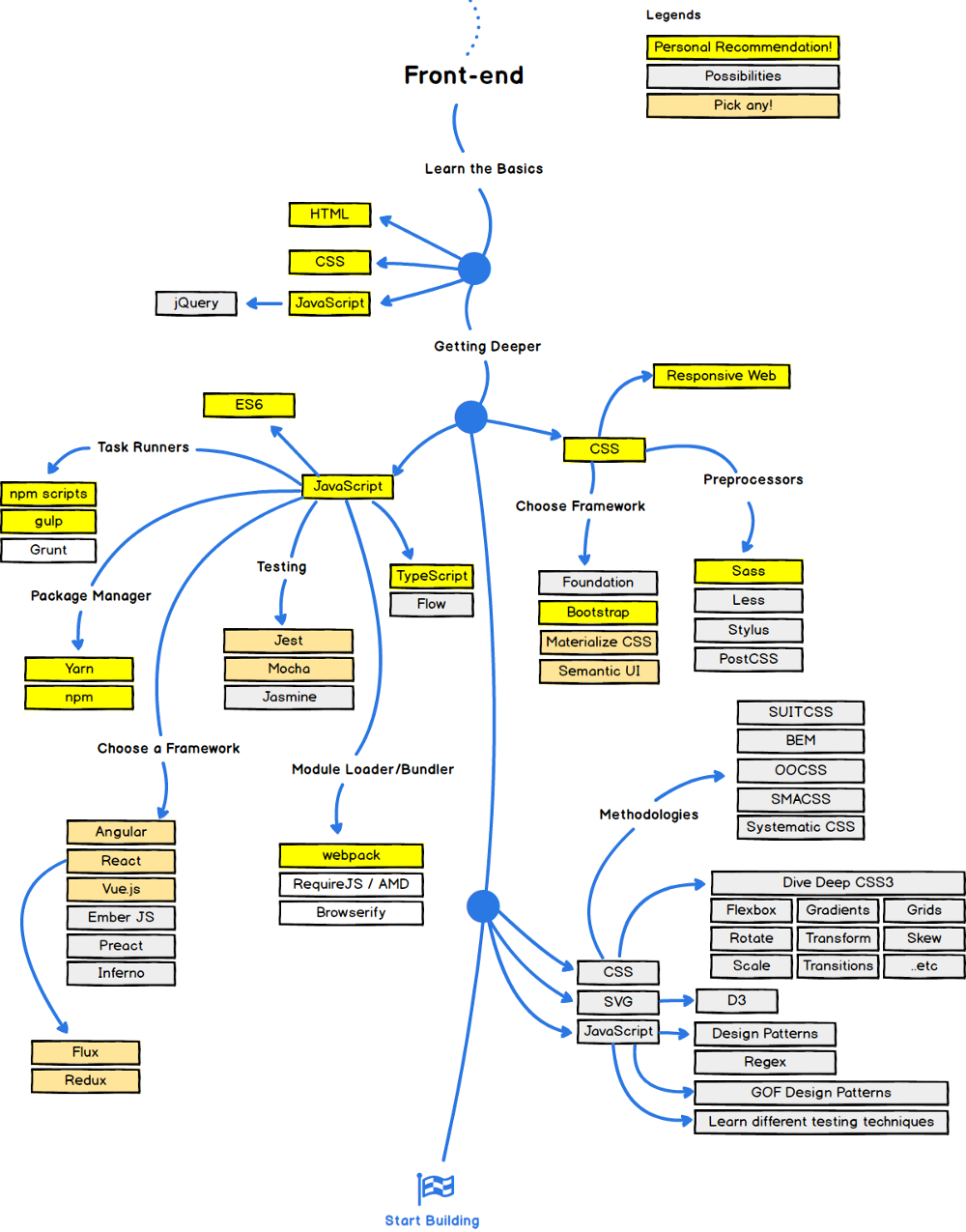
Commentaires
L'article Développement web… Comment démarrer en 2017 ? a été posté dans la catégorie Développement de Human Coders News
YouTube VR will have shared rooms and voice chat instead of comment sections
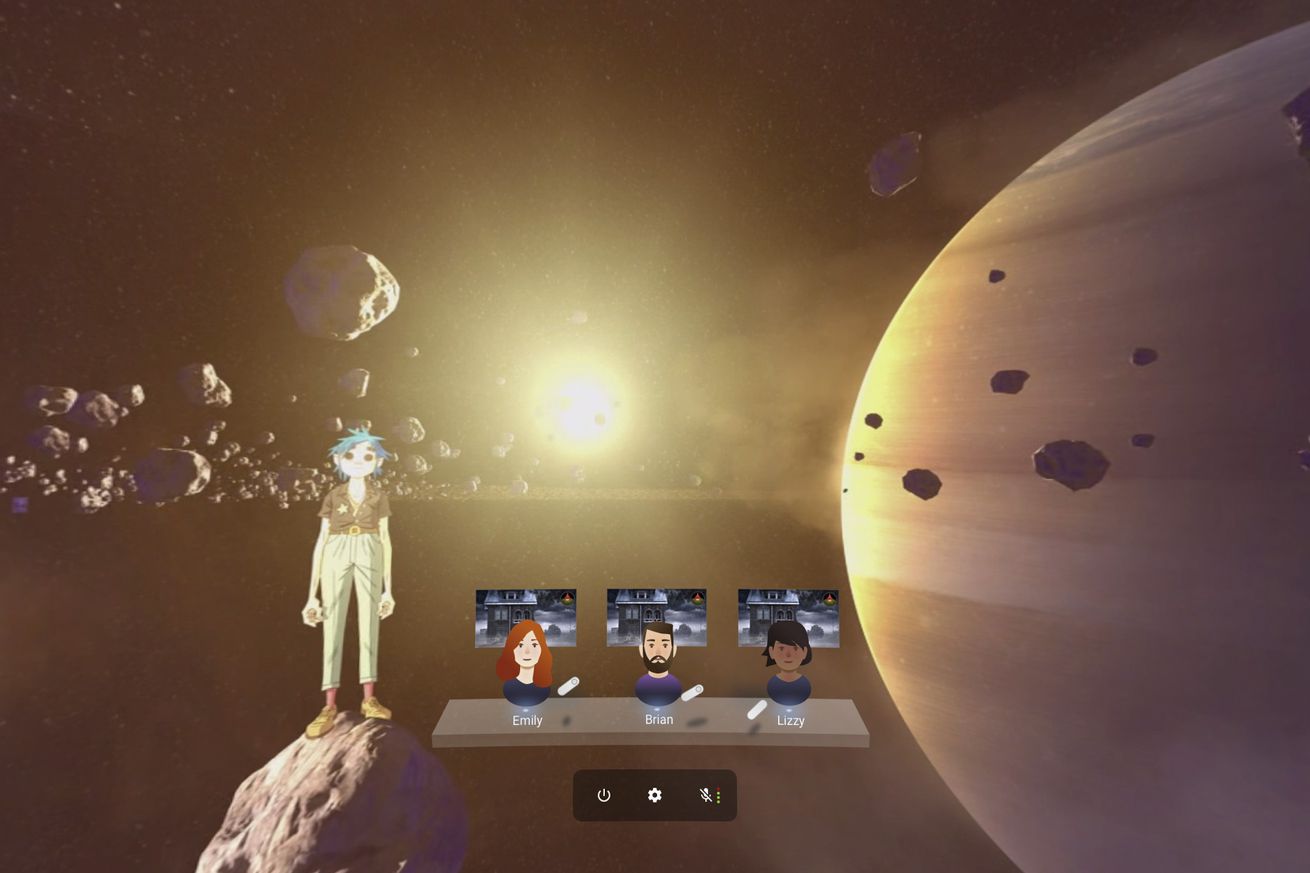
The virtual reality version of YouTube is adding shared rooms that will let people view 360-degree videos together, part of a larger update to Google’s Daydream VR platform. The new feature, coming later this year, offers what YouTube VR product lead Erin Teague calls a “co-watching experience.” That means that small groups of people can enter a viewing session, talking to each other via voice chat.
Teague describes community as “one of the core pillars that makes YouTube YouTube.” People will have control over what they’re viewing, but they’ll be able to see what other people are watching and choose to sync up the same video. People will appear as customizable (but generally human-looking) avatars, and they’ll speak out loud in real...
Le Surface Studio sortira le 15 juin en France
 Microsoft a enchaîné les annonces à un rythme soutenu depuis l’année dernière. Après avoir levé le voile sur le tout premier tout-en-un de son histoire, le géant américain a remis le couvert avec un nouveau laptop conçu pour les utilisateurs les plus nomades. Ces deux machines arriveront en France le mois prochain. Plus précisément le […]
Microsoft a enchaîné les annonces à un rythme soutenu depuis l’année dernière. Après avoir levé le voile sur le tout premier tout-en-un de son histoire, le géant américain a remis le couvert avec un nouveau laptop conçu pour les utilisateurs les plus nomades. Ces deux machines arriveront en France le mois prochain. Plus précisément le […]
Stanley Robotics lève 3,6 millions d’euros pour son robot-voiturier autonome
Author information

Google I/O: Google Unveils VPS – Indoor Navigation Through AR
Clay Bavor, VP of VR for Google, took the stage to share intriguing new information for immersive technology. He made a blockbuster announcement for the new standalone VR headset Google is working on with HTC and also shared that the S8 will finally be getting Daydream support.
Not to be left out, AR also got some shine from Bavor and there are some cool things down the pipeline.
First up, the 2nd gen AR phone will go on sale this summer. The new Asus ZenFone AR is a far cry from the first Tango-equipped device, adopting the small form factor prevalent across the mobile phone industry currently. Bavor didn’t spend very time on hardware before he shifted right into new technology that could send shockwaves across the mobile industry.
“AR is most powerful when it’s tightly coupled to the real world,” says Bavor. “The more precisely, the better.” Google has been working with the Google Maps team to get precise location data for indoors. The result is Visual Positioning Service, or VPS, which uses your phone to find distinct visual features in your surroundings to triangulate and get you to your desired space.
The example on stage showed a VPS equipped phone take a user directly to the specific screwdriver he or she needed in a Lowe’s store. The visual representation of how this works showed the phone’s camera marking “feature points” with different color dots. It recognizes where items are in the space down to within a few centimeters. Then the user interface shows navigation-like elements as the user is guided down aisles.
Bavor followed the demo up with an anecdote on how an audio-based version of VPS could help those with impaired vision and “transform how they make their way through the world”.
He also revealed that VPS will also be one of the core capabilities of Google Lens, which we recently covered as well. A lightweight pair of AR equipped glasses with Lens tech and VPS would be incredible to experience and, hopefully, we’ll see that initiative come to fruition in the near future.
Lastly, Bavor tackled AR’s capacity as an educational tool. With over 2 million students served by the Expeditions VR experience, which gave teachers a way to travel with their students without leaving the classroom, Google is now adding an AR mode to give students an augmented way to learn about things seen in the classroom.
The video shown displayed a classroom where each student was equipped with phones on selfie sticks as they watched an augmented volcano erupt on their desk and a tornado take shape in the class. The AR mode got the students up, moving, and excited about the things popping up in their learning environment.
Implications are that Google is gearing up to take Tango and AR the extra mile as they add more and more functionality. It will be interesting to see what happens next.
Tagged with: Google I/O
Vidéo de la semaine : découvrez les robots guerriers géants prêts à se battre !
La chine annonce son robot-combattant et provoque l'Amérique en duel !
Avez-vous déjà regardé des films dans lesquels des robots se battent, pilotés de l'intérieur, pour leur pays ou contre des monstres ? Si ces scènes épiques vont ont marquées, préparez-vous : des ingénieurs Chinois viennent de dévoiler le 3ème robot de combat : leur "robot-gladiateur" le Roi Singe (King Monkey) !
The Elder Scrolls Anthology : Le coffret collector sauve la vie d’un gamer

Un joueur a eu la vie sauve grâce à l’édition collector de The Elder Scroll qui lui a servi de gilet par balles.
Téléchargez nos chouettes applications mobile pour plus d'infos : ici pour iPhone et ici pour Android
© Rédigé par, Sebastien Veyrier pour Begeek.fr le jeu, 11 Mai 2017 à 16h30
HBO’s Silicon Valley takes a direct shot at the tech industry’s obsession with AI
Silicon Valley is Mike Judge and Alec Berg’s biting comedy about the American tech industry, now in its fourth season. Every week, we’ll be taking one idea, scene, or joke and explain how it ties to the real Silicon Valley and speaks to an issue at the heart of the industry and its ever-lasting goal to change the world — and make boatloads of money in the process.
Spoilers ahead for the third episode of season 4, “Intellectual Property.”
What started as a silly and somewhat racially insensitive joke from last week’s episode has turned into Silicon Valley’s latest clever skewering of the tech industry’s fanciful obsessions. The show has always had a knack for tapping into lowbrow humor — who could forget season 1’s elaborate dick joke...
These Shoes Are Powered by Your Steps
Hahna Alexander shares the journey the self-charging work boots that deliver actionable insights to increase efficiency and improve safety. At the core of SolePower’s development is a patented kinetic charger that generates power every step. Hahna is a 2017 winner of Toyota Mothers of Invention.
The post These Shoes Are Powered by Your Steps appeared first on Futurism.
Is This the Superpower of Chatbots?
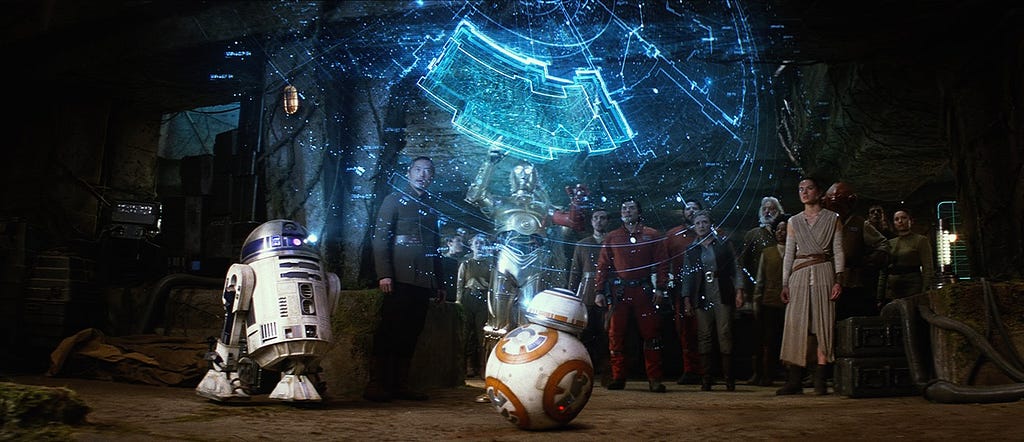
Human conversations drive habits and bots do too.
In building and testing our bot at Everist, we’ve applied many habit building principles to drive behavior change.
This is what we’ve learned so far.
Conversations Can Drive Habits
My co-founder Scot goes for a run every afternoon around 3pm. Before he does, he usually says, “hey, I’m going for a run.” I realized recently that just hearing him say those words causes me to get up and get a cup of coffee.
Think about that. A person says something and it triggers a physical reaction. I am aware that I usually have an afternoon coffee, but I only noticed it was on cue after hearing a similar habit described in this video.
If you work with other people, you might be saying a version of the same thing to the same person every day. Something like: “good morning, Jen.” The next time you do this, try to see what the recipient of your greeting does after you say it. Is your conversation a habit cue for them? If they get few other interruptions to their day, you could be influencing their behavior.
What Are Habits?
Habits are actions that we take without having to consciously decide to take them.
The part of the brain associated with habits is called the basal ganglia. It is separate from the part of the brain that makes decisions, the prefrontal cortex. Once you establish a habit, your basal ganglia doesn’t need to consult with your prefrontal cortex before taking action. (For an explanation of this concept, Thinking Fast and Slow by Daniel Kahneman is the go-to).
Think about a simple action like turning on the light when you enter a room. You reach for the switch automatically, sometimes even when the light is already on. It’s not a conscious decision.
Every habit follows a psychological pattern that Charles Duhigg calls a Habit Loop. Something that serves as the cue, a routine happens without much thinking, then there’s a reward. For turning on the lights, the cue is that it’s dark, the routine is the action of flipping the switch and the reward is that the lights come on. We’re basically rats.
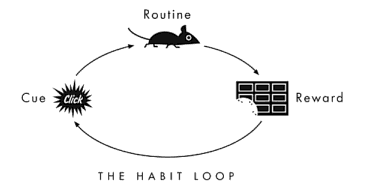
Duhigg says, “when a cue and a behavior and a reward become neurologically intertwined, what’s actually happening is a neural pathway is developing that links those three things together in our head.” The reward we get from completing a habit is linked to the cue we get next time it’s time to perform the action.
How To Influence Habits Digitally
The point of establishing habits is to move as much action as possible to your subconscious mind. It follows that digital products influencing behavior should require little conscious effort.
In Hooked, Nir Eyal takes the idea of the habit loop to designing products that become habitual.
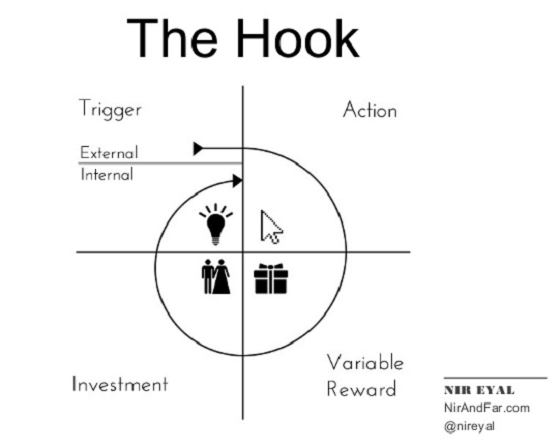
Nir notably changes “reward” to “variable reward”. Variable rewards are what make Facebook or Pinterest so sticky. After you take the action (in this case to open the app), your reward (seeing your timeline) will never look the same. That unpredictability keeps you coming back for more.
Without a strong reward, notifications stop causing you to take action. Nir adds “investment” as the final step in the loop to emphasize the need for strong rewards to drive the next cue.
Why Chatbots Are Perfect For Habit Building
Bots are able to facilitate every part of the Habit Loop/Hook.
🔔 Cue/Trigger………………………Broadcast message from bot
✅ Routine/Action ………………….User action
🎁 Reward/Variable Reward ………Response from bot
💰 Investment ……………………….User becomes engaged
The most successful bots organically follow this process and have more engaged users as a result. If their end goal is not to build a habit, using the bot becomes the habit.
Below are some of the characteristics about bots that make them a useful tool for habit building with examples of bots already helping users build habits.
1. ACCESSIBILITY
Bots can live where you’re already chatting with real humans like Facebook Messenger or Slack. This makes them more literally accessible in that you don’t have to download another app.
But also, everything from the color of the icon and the format of the message makes the interaction feel more familiar, friendly and accessible. This drives a more positive association to the habit cues.

Healthybot on Slack helps you build and track healthy habits at work. Healthybot lives within Slack which makes you more likely to read the its messages and track your progress without leaving the context of work.
2. PERSONALITY
Bots should have a personality and feel like a familiar person or character. The personification of the tool helps drive stickiness of the habit. Conversation is a more human way to influence behavior than push notifications, for example.

Penny, a bot that helps you build better spending habits, establishes personality really well. She is funny and supportive but her personality doesn’t distract from her function.
Habits related to money already carry a lot of baggage so keeping it positive and friendly is really helpful in helping users stick to using it. A good indicator of an established personality is when you call the bot “she” or “he” without even noticing as I’ve done here. :)
3. ACCOUNTABILITY
Chatbots provide the perfect level of accountability.
Humans are okay at holding each other accountable, but all relationships also come with lots of confusing context. When we interact with someone, we don’t just focus on the interaction. We are also thinking: “does this person like me”; “do I like this person”; “last week this person interrupted me in a meeting”.
There’s a natural level of judgement you feel when you interact with humans. This feeling sometimes drives you to complete an action, but it doesn’t help you to develop a habit.
You might try to hold yourself accountable to completing an action habitually. You can do this by using calendar reminders or push notifications, for example. But that experience is impersonal. It’s clear that no one else is seeing your progress or cares.
Chatbots have the opportunity to tow this line between I care a little bit what this thing thinks of me because it has a personality and I still know I’m smarter than it and don’t assign any other human baggage to our relationship.
It’s the right balance to influence a habit since they are subconscious but also require real action.

At Everist we’ve built Evie to influence productivity habits like prioritization and reflection at work. Our most interesting find in testing was that people felt MORE accountable to the bot than to a human.
4. SURPRISE
The most engaging human conversations are ones where you’re constantly surprised about what you hear. It’s the same with bots.
Within a conversational interface, we can provide strong variable rewards that would be disorienting in a visual context.
This is as simple as making the user feel heard by understanding their answers. The more unique and customized the rewards get, the deeper the investment the user makes.

Joy on Facebook Messenger is a bot that that helps build a habit of reflection. It asks simple questions like, “how are you today?”. The bot runs sentiment analysis on your answers and reflects back to you how you’re feeling. This is surprising and delightful every time.
Why This Matters
People are more overwhelmed and distracted than ever. With so many constant digital distractions, we spend lots of time trying to decide what to do next. This makes building habits a crucial skill.
As we all speculate and try to figure out the right place for bots, habit building is a use case that could be native to the medium.
It is a fundamental shift in how we approach behavior change and there are opportunities in every industry to leverage it. Fields as diverse as healthcare, finance and government are already building bots with habits in mind.
What do you think? Could this be the superpower of bots?
Are there more examples of bots doing this well?
Call To Action
Our bot, Evie is in beta on Slack! Our users find it’s a painless way to be more productive and feel good about daily work. Click to join.

If you liked this post please hit us with a little ❤ below.
Is This the Superpower of Chatbots? was originally published in Chatbots Magazine on Medium, where people are continuing the conversation by highlighting and responding to this story.
Donjons et Dragons un outil thérapeutique ?
Cela fait longtemps que les psychothérapeutes utilisent des « jeux de rôle » pour aider leurs patients à mieux gérer leurs difficultés à affronter la société. Mais ces « jeux de rôle » n’ont pas grand-chose à voir avec les autres jeux de rôle, dont Donjons et Dragons est l’archétype, ceux joués sur tables avec des dés et qui précipitent les participants dans un univers fictionnel appartement généralement à la fantasy ou à la science-fiction.
Mais, nous raconte Kotaku, c’est en train de changer. Plusieurs équipes de psychologues, aux Etats-Unis, utilisent aujourd’hui D&D dans un but thérapeutique.

Adam Davis et Adam Jones ont fondé à Seattle le Wheelhouse Workshop, où sont organisées de telles parties de jeu de rôle. La journaliste de Kotaku, Cecilia D’Anastasio, nous donne l’exemple d’un adolescent, Frank, qui se révélait incapable de communiquer dans son environnement scolaire, et qui restait toujours isolé. Ils lui firent jouer le rôle d’un nain barbare, bruyant et sans manières. Ils firent asseoir Frank dans la position de son personnage, les jambes écartées et les coudes confortablement installés sur la table. En jouant ce personnage, explique Cecilia D’Anastasio, Frank a pu expérimenter d’autres manières d’interagir avec autrui.
Le jeu pourrait également aider les enfants qui se sentent désorientés dans la société, et même aider à mieux gérer l’autisme. Cecilia D’Anastasio raconte avoir rencontré la mère d’un enfant peu flexible, qui avait du mal à dévier de ses idées. Mais, lors d’une partie de D&D au Wheelhouse Workshop, les aventuriers constituent une « compagnie » qui doivent avoir à gérer des problèmes collectivement. On ne peut pas en faire qu’à sa tête. Parlant de son enfant à la journaliste de Kotaku, elle lui a expliqué qu' »il m’a effectivement dit qu’il n’était parfois pas d’accord avec ce que ses compagnons d’aventure avaient décidé…, et plus tard, il a fini par convenir que leur décision était la bonne… C’est une surprenante amélioration de sa flexibilité. »
En Pennsylvanie, le Bodhana Group s’occupe de cas particulièrement difficiles. Ces thérapeutes sont en charge d’un groupe exclusivement constitué de garçons au comportement difficile, certains ayant même commis des agressions sexuelles. Pour les aider, Jack Berkenstock, qui dirige l’équipe, conçoit des parties de Donjons et Dragons spécifiquement adaptées à ces jeunes.
Berkenstock s’efforce de concevoir des jeux où les actions des joueurs ont des conséquences, par exemple, il n’empêcherait pas un joueur trop impulsif de se précipiter dans un repaire de dragons. Si son personnage est sévèrement blessé, c’est une répercussion naturelle. Lorsque ses joueurs effectuent un raid sur un village d’orcs, il prend soin de montrer comment cela affecte les enfants orcs ou leurs mères. « Je crois que vous pouvez explorer les conséquences de vos actions dans un environnement où personne ne se blessera physiquement », a déclaré M. Berkenstock.
D&D va-t-il se professionnaliser et s’intégrer officiellement au catalogue des pratiques thérapeutiques ? Comme le conclut intelligemment la journaliste de Kotaku, certainement pas, et cela vaut mieux ainsi : « D&D n’a jamais été et ne sera jamais commercialisé comme un outil thérapeutique. C’est juste un jeu. C’est aussi pour ça qu’il pourrait fonctionner avec les enfants qui ont besoin d’aide. »
Can a Bluetooth-enabled pill cap help you remember your medicine?

A new Bluetooth-enabled bottle cap called Pillsy is designed to prevent people from forgetting their pills. The device launches today for $39 and will remind you to take both medicine and vitamins, or really, whatever you need daily.
Pillsy syncs with a companion iOS / Android app that pulls information about different drugs from an FDA database. You can enter the name of a medication, the dosage amount, and what time you want to take it every day. Reminders will then come in the form of a text message, phone call, or lockscreen reminder. Of course, all this medical information is sensitive, so Pillsy says it’s HIPAA-compliant, meaning it can’t sell your data.
None of this functionality is actually more...
itch.io: La caverne d’ali baba des jeux indépendants !
Vous connaissez Steam, et son quasi monopole sur le marche des jeux vidéos? Vous voulez passer à autre chose, qui respecte plus les créateurs, et qui n’ait quasiment aucune sélection à l’entrée? Bonne nouvelle ! Un tel site existe, et comme vous l’avez deviné, il s’agit d’itch.io ! itch.io : Un site destiné aux indépendants […]
Cet article itch.io: La caverne d’ali baba des jeux indépendants ! est apparu en premier sur .
A Robot Just Taught Another Robot How to Read
Baidu recently made an astonishing breakthrough in machine learning. They’ve achieved zero shot learning by programming a bot to teach another bot how to read. But in a surprise twist, they ended up with an AI that is able to understand language at amazingly complex levels.
The post A Robot Just Taught Another Robot How to Read appeared first on Futurism.
HTC’s squeezable U phone is apparently coming May 16th

HTC has announced an announcement: something’s happening on May 16th, according to a flyer sent out with the tagline “Squeeze for the brilliant U.”
What on earth could that mean? Well, we’ve already heard word of an upcoming phone codenamed Ocean and likely to be officially called the HTC U, and it’s said to have a feature called “Edge Sense” involving touch sensors embedded in the frame around the phone — in other words, you could interact with the phone by squeezing it.
This isn’t a wildly new concept. Nearly five years ago my former colleague Jeff Blagdon and I saw a “Grip UI” prototype from Japanese carrier NTT Docomo that was designed to show off use cases for the same technology — it could launch apps, perform voice searches, and...
Dropbox ajoute le scan de documents à son app Android

3D capture startup raises $1.8 million USD
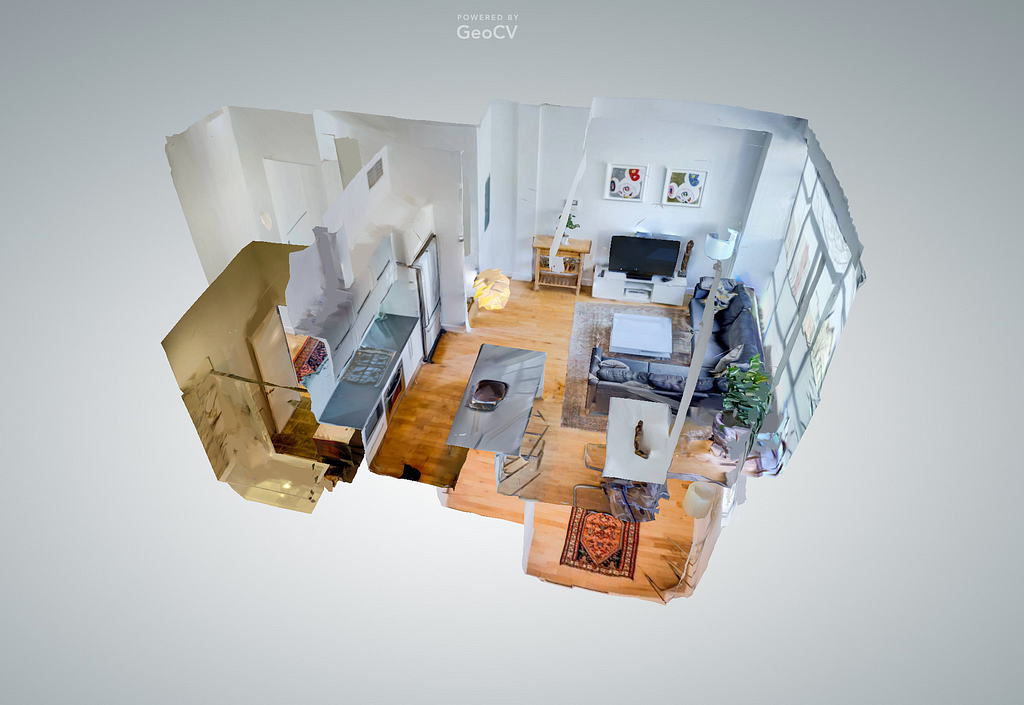
New York-based 3D capture startup GeoCV, raised $1.8 million in seed investment from Runa Capital, Emery Capital, and several New York angel investors.
The company scans interior spaces using a 3D camera equipped smartphone and proprietary software. The space can be viewed in 3D from any angle in virtual reality (VR), or in a web browser.
Unlike the company’s competitors like Matterport, that offer 3D scanners at a price of $5,000, GeoCV utilizes $500 smartphones with 3D cameras such as Lenovo Google Tango.
“Our goal is to become the world’s №1 solutions provider for 3D capturing,” said Anton Yakubenko, GeoCV co-founder and CEO in an official statement.
Sign up today! Get access to our exclusive reports on all things virtuality
“Real estate is a beachhead market, where agents can include a 3D virtual tour in their listing. Other brick and mortar industries such as construction, interior design, insurance and property management will follow. User-generated content creation tools are the longer-term future when everyone has a 3D camera in their pocket and can easily view in AR and VR.”
GeoCV was founded in 2014 by 3D computer vision experts with 12 years of experience in the industry. The company has previously raised $700,000 and is an alumnus of San Francisco-based Rothenberg Ventures River River accelerator for VR companies, and New York-based Starta Accelerator.
Read more on Haptical
- Virtual reality can be a good way to motivate elderly people
- 360-degree music video breaks YouTube record
- Xiaomi launches new VR headset for $14
- Neural network-based technology helps smartphones augment any object
Sign up today! Our premium newsletters are designed to help you navigate the best practices of VR/AR in health care, education, entertainment and enterprise markets.
Follow us on Medium to get the latest Virtual Reality trends and news in your inbox every week.
Disclaimer: We publish affiliate links. If you purchase a product by using these links we may receive a small commission to support our service. We are an independent publisher committed to bring the latest trends, products and services on Virtual and Augmented Reality.
3D capture startup raises $1.8 million USD was originally published in Haptical on Medium, where people are continuing the conversation by highlighting and responding to this story.
